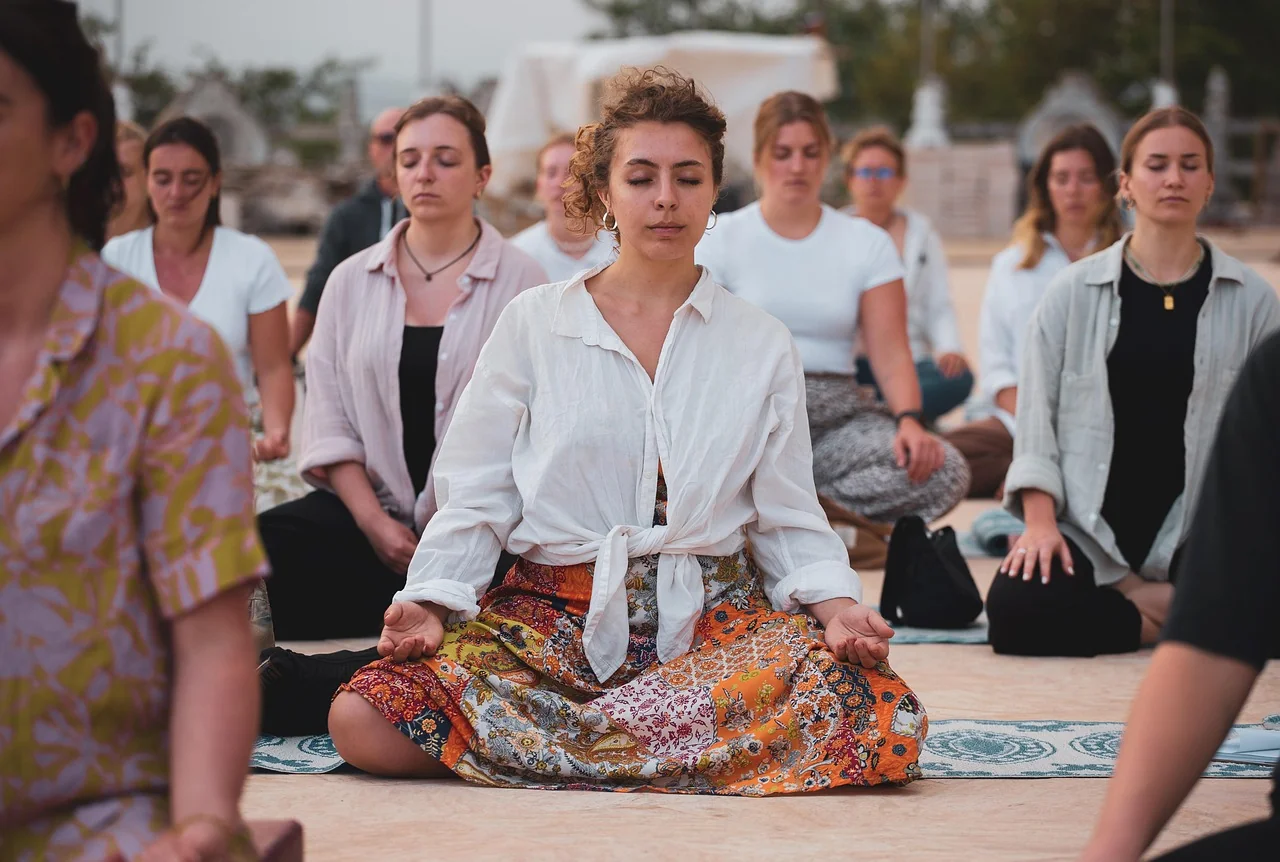What if you could access a deeper well of insight for life's biggest challenges? We often think of wisdom as something that only comes with gray hair and decades of experience—a prize for simply surviving long enough. But what if you could actively cultivate it? This is where the powerful practice of meditation for wisdom comes in. It’s not about emptying your mind, but about filling it with profound clarity, perspective, and understanding.
True wisdom is more than just accumulated knowledge; it's the ability to see the bigger picture, to respond instead of react, and to navigate life with a steady, compassionate heart. This article will guide you through exactly how meditation rewires your brain for these deeper insights. You'll discover specific techniques, learn how to build the core pillars of wisdom, and find practical ways to integrate this timeless understanding into your daily decisions. Ready to unlock the sage within? Let's begin.
The Direct Link: How Meditation for Wisdom Cultivates Deep Insight
Meditation doesn't magically download answers to you. Instead, it systematically trains the mental faculties that wisdom is built upon. It’s like upgrading the operating system of your mind to process information more clearly and compassionately.
The journey begins with moving from reactivity to response. Without awareness, our actions are often automatic reactions driven by old patterns, fears, or desires. A stressful event triggers an angry outburst; a criticism sparks defensiveness. Meditation creates a crucial pause. By repeatedly practicing observation—noticing a thought or emotion without immediately grabbing onto it—you build a space. In that space, you find the freedom to choose a wiser, more considered response.
This practice also allows you to see the big picture. Our usual state of mind is cluttered with the ego's noise: "What does this mean for me? How do I look? What do I need to protect?" This self-referential chatter narrows our perspective. Meditation for silence turns down the volume on this internal narrator. As you step back from identifying with every passing thought, you begin to see situations more objectively. You can understand different viewpoints and recognize the interconnected nature of events, which is a hallmark of wisdom.
Furthermore, meditation sharpens your discernment. It’s not about suppressing thoughts, but about understanding their nature. As you sit in stillness, you learn to distinguish between the voice of fear (which is often urgent and limiting) and the voice of intuition (which is typically calm and expansive). This enhanced discernment is crucial for making sound judgments in complex situations.
Neuroscience supports this transformation. Regular mindfulness practice has been shown to strengthen the prefrontal cortex, the brain region responsible for executive functions like rational decision-making, emotional regulation, and self-awareness. Simultaneously, it helps calm the amygdala, the brain's alarm system. A stronger prefrontal cortex and a calmer amygdala create the ideal neural environment for wise action to flourish, which is one of the key answers to the question, what is meditation good for.
Core Techniques: A Practical Guide to Wisdom-Based Meditations
While any meditation can contribute to calmness, certain practices are particularly potent for cultivating wisdom. Here are four powerful techniques to incorporate into your routine.
Mindfulness Meditation: The Foundation of Awareness
This is the cornerstone practice. The goal is simple but profound: to pay attention to the present moment without judgment.
- How to Practice: Sit comfortably and bring your attention to your breath. Notice the sensation of the air moving in and out. When your mind wanders—which it will—gently guide it back to the breath. Each return is a rep for your awareness muscle.
- The Wisdom Link: This cultivates mindful awareness, the ability to see things as they are, not as you fear or wish them to be. It’s the foundational skill that makes all other insights possible.
Loving-Kindness (Metta) Meditation: Expanding Your Perspective
Wisdom isn't cold or detached; it’s deeply connected to compassion. Metta meditation systematically breaks down the barriers between you and others.
- How to Practice: Silently repeat phrases of goodwill and kindness, first for yourself ("May I be happy, may I be safe, may I be healthy"), then for a loved one, a neutral person, a difficult person, and finally, for all beings.
- The Wisdom Link: This practice is essential for cultivating compassion. It directly challenges our biases and ingrained "us vs. them" thinking. By actively wishing well for others, you gain a more inclusive, interconnected view of the world, which is a profound aspect of wisdom.
Self-Inquiry Meditation: Investigating the Self
This contemplative practice goes directly to the source of much confusion: our sense of self. It asks the fundamental question, "Who am I?"
- How to Practice: Sit quietly and ask yourself, "Who am I?" or "What is the 'I' that is aware?" Do not seek an intellectual or philosophical answer. Instead, feel into the sense of being, of awareness itself. When thoughts about your roles, body, or personality arise, gently note them and return to the question.
- The Wisdom Link: This powerful self-inquiry practice helps deconstruct the ego. You start to see that your true nature is the aware space in which thoughts and feelings appear, not the thoughts and feelings themselves. This realization can dissolve personal suffering and lead to a profound, unshakable peace.
Observing Thought Patterns: The Lab of the Mind
Use your meditation session as a laboratory to study your own mind.
- How to Practice: Instead of focusing on the breath, allow thoughts to arise. Instead of getting caught in the story, label them. Notice "planning," "worrying," "remembering." See them as mental events passing through the sky of your awareness.
- The Wisdom Link: This practice reveals your habitual mental loops. You see firsthand how a single thought can snowball into a full-blown drama. This direct insight into the impermanent and often illusory nature of your thoughts gives you incredible freedom from them.
Cultivating the Four Pillars of Wisdom Through Your Practice
Think of wisdom as a temple supported by four strong pillars. Your meditation practice is the tool that builds and strengthens each one.
Pillar 1: Clarity of Mind A muddy pond cannot reflect the sky clearly. A agitated mind cannot reflect reality clearly. Meditation is the process of settling the sediment of mental chatter. Through consistent practice, your mind becomes calmer and more focused, allowing you to perceive situations, people, and yourself with greater accuracy and less distortion.
Pillar 2: Emotional Balance Wisdom is not the absence of emotion, but the ability to be with emotions without being overthrown by them. This quality is known as equanimity. Meditation teaches you to sit with discomfort, joy, sadness, and fear without immediately needing to act. You learn that emotions are like weather—they come and go. This balance prevents you from making reactive decisions fueled by temporary emotional states, and is a cornerstone of meditation for mental wellbeing.
Pillar 3: Compassionate Understanding This goes beyond simple kindness. Through practices like Metta, you develop a deep understanding of the shared human experience. You recognize that everyone, like you, seeks happiness and wishes to avoid suffering. This doesn't mean you condone harmful behavior, but you understand its roots in ignorance and pain. This compassionate understanding allows for wiser, more effective responses in your relationships.
Pillar 4: Insight into Impermanence Much of our suffering arises from resisting change. We cling to what is pleasant and resist what is unpleasant. Meditation provides direct, experiential insight into impermanence. You watch sensations change, feelings shift, and thoughts vanish. This isn't a depressing realization; it's a liberating one. By embracing the fluid nature of life, you learn to hold experiences more lightly, reducing attachment and aversion—the primary drivers of unwise action.
Integrating Your Practice: Bringing Meditative Wisdom into Daily Life
The true test of wisdom is not on the meditation cushion, but in the messy, unpredictable world of daily life. Here’s how to bridge the gap.
- Take Mindful Pauses: Before replying to a provocative email or entering a stressful conversation, consciously take three breaths. This tiny pause creates the space for a wise response to emerge, instead of a habitual reaction.
- Journal for Insight: Keep a notebook nearby and spend five minutes after your meditation writing. What arose during your sit? What patterns did you notice? This helps to crystallize fleeting insights and apply them to your life.
- Practice Wisdom in Communication: In your next conversation, make a goal to listen deeply without planning your response. Listen to understand, not to reply. This single shift can transform your relationships and open you to perspectives you would have otherwise missed.
- Reframe Challenges: When you face an obstacle, see it as your "wisdom gym." Ask yourself, "How can I apply clarity, balance, compassion, and an understanding of impermanence to this situation?" This turns problems into active practice sessions.
Overcoming Common Challenges on the Path to Wisdom
The path to wisdom is not always smooth. Expect these common challenges and meet them with understanding.
- "My mind is too busy to be wise." This is the most universal experience. Remember, the goal is not to stop thoughts, but to change your relationship with them. A busy mind is the very condition for practice; each wandering thought is an opportunity to gently return to awareness, strengthening your focus and patience.
- "I don't feel any wiser." Wisdom grows subtly, like a tree. You won't feel it day-to-day. Instead, you might look back in six months and realize you handled a difficult situation with more grace than you would have before. Trust the process and look for small signs of growth.
- "Strong emotions overwhelm me." When anger or fear feels all-consuming, switch your technique. Don't try to observe your breath. Instead, bring your attention directly into the physical sensations of the emotion in your body. Where do you feel the tension? What is its texture? By grounding the emotion in the body, you rob it of its destructive mental narrative and allow it to pass through you more quickly. This is a powerful skill, especially for those using meditation for chronic stress.
- "I don't have time." Consistency trumps duration. A daily five-minute practice is far more powerful than an hour once a month. Anchor your practice to an existing habit—like after your morning coffee or before brushing your teeth at night—to make it sustainable.
The pursuit of wisdom through meditation is a lifelong journey, but it is one that begins with a single, mindful breath. It is an active engagement with your own mind, a commitment to seeing clearly, and a courageous opening of the heart. By dedicating yourself to this practice, you are not just waiting for wisdom to find you; you are actively building the foundation for a life of profound insight, peace, and purposeful action.
In conclusion, the journey of meditation is far more than a simple stress-relief technique; it is a profound training ground for cultivating wisdom. By consistently turning inward, we learn to observe the constant flow of our thoughts and emotions without being enslaved by them. This practice fosters the key components of wisdom: deep self-awareness, clear discernment, and a compassionate understanding of our interconnectedness with others. The insights gained on the cushion—recognizing impermanence, managing reactivity, and accessing a deeper, quieter intelligence—gradually infuse our daily lives, leading to more thoughtful responses and wiser choices. While the path requires patience and dedication, each moment of mindfulness is a step toward a more insightful and fulfilling existence. Begin your practice today, even for a few minutes, and start unlocking the timeless wisdom that resides within you, transforming not only your own life but also enriching the world around you.


